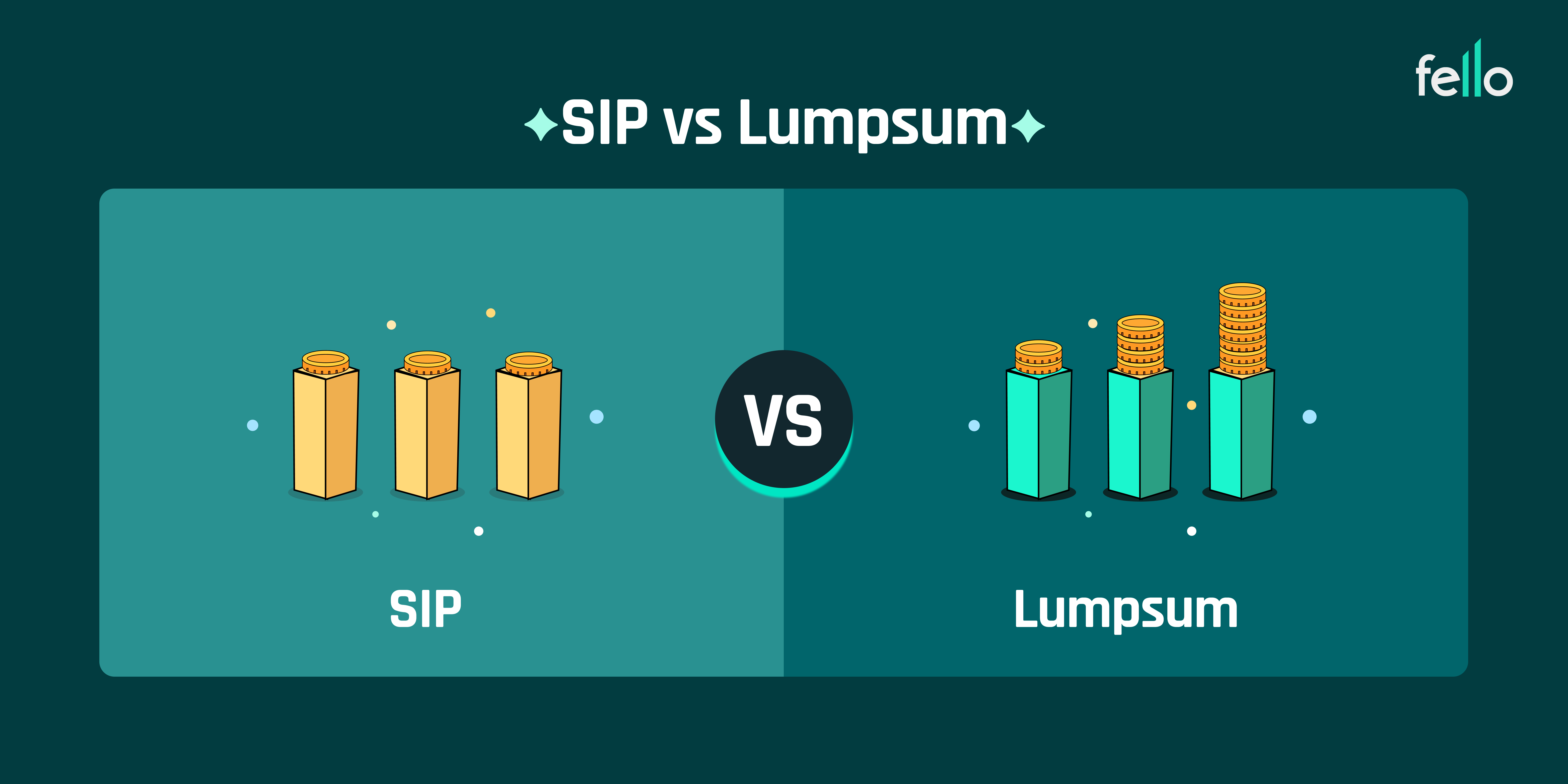When it comes to mutual fund investing, two common approaches often come up, Systematic Investment Plans (SIPs) and Lumpsum Investments.
Both can help you grow wealth, but they work very differently. The right choice depends on your income pattern, risk appetite, and market outlook.
What is a SIP?
A Systematic Investment Plan (SIP) lets you invest a fixed amount regularly, usually monthly or quarterly, in a mutual fund.
It’s like putting your savings on autopilot.
Example:
If you invest ₹10,000 every month for 10 years in an equity mutual fund with an average annual return of 12%, your total corpus could grow to around ₹23 lakhs 6 almost double your total investment of ₹12 lakhs.
Key Benefits:
- Rupee Cost Averaging: You buy more units when the market is low and fewer when it’s high, reducing the impact of volatility.
- Financial Discipline: Encourages regular investing — ideal for salaried individuals.
- Low Entry Barrier: You can start with as little as ₹500 or ₹1,000 per month.
- Power of Compounding: Long-term SIPs multiply returns significantly over time.
What is a Lumpsum Investment?
A Lumpsum investment is when you invest a large amount at once — say ₹5 lakh or ₹10 lakh — into a mutual fund.
This strategy is best suited for investors with significant idle funds (like bonuses, inheritance, or proceeds from property sales) and a long-term investment horizon.
Key Benefits:
- Immediate Market Exposure: Your entire capital starts compounding right away.
- Ideal in Rising Markets: Helps capture the full benefit of a market uptrend.
- Less Management Needed: Unlike SIPs, you don’t have to track monthly payments.
SIP vs Lumpsum: Key Differences
| Factor | SIP | Lumpsum |
|---|---|---|
| Investment Style | Regular, disciplined investing | One-time large investment |
| Market Timing Risk | Low – spreads risk over time | High – depends on entry point |
| Best For | Salaried investors, beginners | Investors with large corpus |
| Volatility Management | Better – averages cost | Riskier – exposed to short-term swings |
| Flexibility | High – can start, stop, or modify | Moderate – funds are locked in for growth |
Which One Should You Choose?
Choose SIP if:
- You earn monthly income.
- You’re new to investing.
- You want to reduce the impact of market volatility.
- You prefer long-term, gradual wealth creation.
💰 Choose Lumpsum if:
- You already have a large corpus ready to invest.
- You have a long-term horizon (5+ years).
- You’re comfortable with market fluctuations and can time your entry strategically.
Pro Tip: Combine Both
Many seasoned investors use a hybrid approach — investing a portion as lumpsum during market dips, while continuing SIPs for steady compounding.
This balances discipline with opportunity.
Final Thoughts
There’s no one-size-fits-all answer in the SIP vs. Lumpsum debate.
Your cash flow, goals, and risk tolerance should guide the choice.
But remember — in investing, time in the market beats timing the market.
Whether through SIP or lumpsum, the key is to start early and stay consistent.

